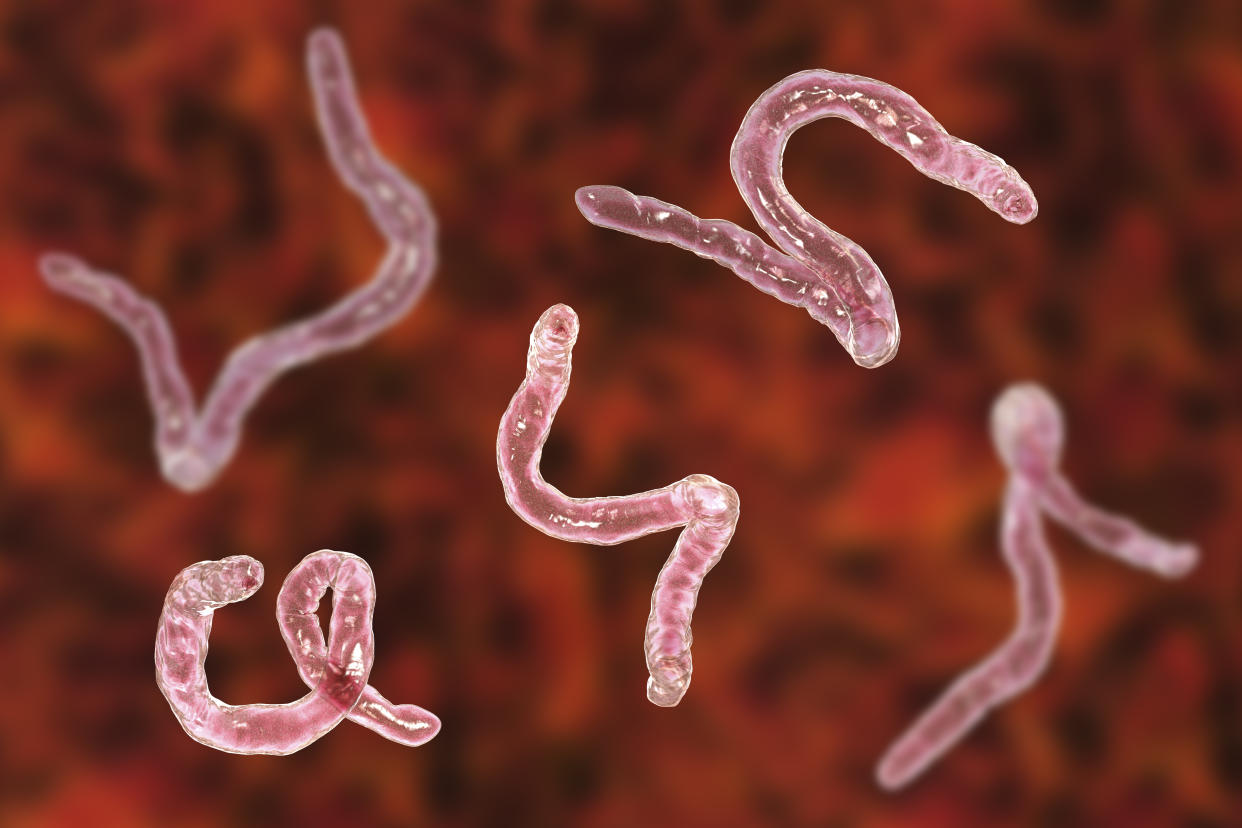Man has a 12cm tapeworm pulled from his brain

A man had a 12cm (4.7inch) live worm living in his brain for more than a decade.
The unnamed man, from Guangzhou in south China, began to feel numb on the left side of his body in 2007.
Over the next few years he endured mysterious seizures and would often black out.
READ MORE: Man, 18, dies from tapeworm larvae in his brain after eating pork
With doctors failing to find what was wrong, it was not until last year that medics spotted a Spirometra tapeworm in his brain.
The larvae was removed during a “risky” two-hour operation.
Undercooked seafood is thought to have been to blame, with the everything from crabs to snails often playing host to the parasite.
READ MORE: US man's headache caused by tapeworm larvae
Due to the worm being in his brain, the patient was initially given drugs to try and kill the larvae.
When this failed to help, he had no choice but to go under the knife at Guangdong Sanjiu Brain Hospital.
“The surgery was risky,” Dr Gu Youming said.
“The live tapeworm was moving in his brain, and we had to remove all of it, otherwise the leftover part could grow again.
“It is not the only case, our hospital has treated four patients this year,” Fox News reported via AsiaWire.
What are spirometra?
Spirometra live in the intestines of cats and dogs, according to the Centres for Disease Control and Prevention (CDC).
The pets shed the eggs in their faeces, which hatch in water.
This releases an “embryo” that gets taken up by animals like crabs, lobsters and snails.
When these animals are eaten, the infection spreads to the predator, often fish or reptiles.
If humans eat undercooked, contaminated seafood or fish, they also act as “secondary hosts”.
This results in a condition called sparganosis.
It can also come about if they drink contaminated water.
READ MORE: Brain Parasites, California's Hidden Health Problem
Spirometra are found worldwide, however, most cases of human infection occur in southeast Asia, according to the CDC.
It is unclear how often sparganosis occurs, but it is thought to be rare.
Once in a human, the worm can survive for up to 20 years anywhere in the body, including the breast, lungs or central nervous system.
If in the brain or spine, patients may endure weakness, headache, numbness, tingling or even seizures.
Spirometra typically have to be removed surgically, according to DermNet NZ.
However, if the larvae is in the lung or pericardium - the sac that surrounds the heart - surgery may not be possible.
In these cases, chemotherapy may be tried.
All of the worm has to be removed to prevent the disease recurring.


